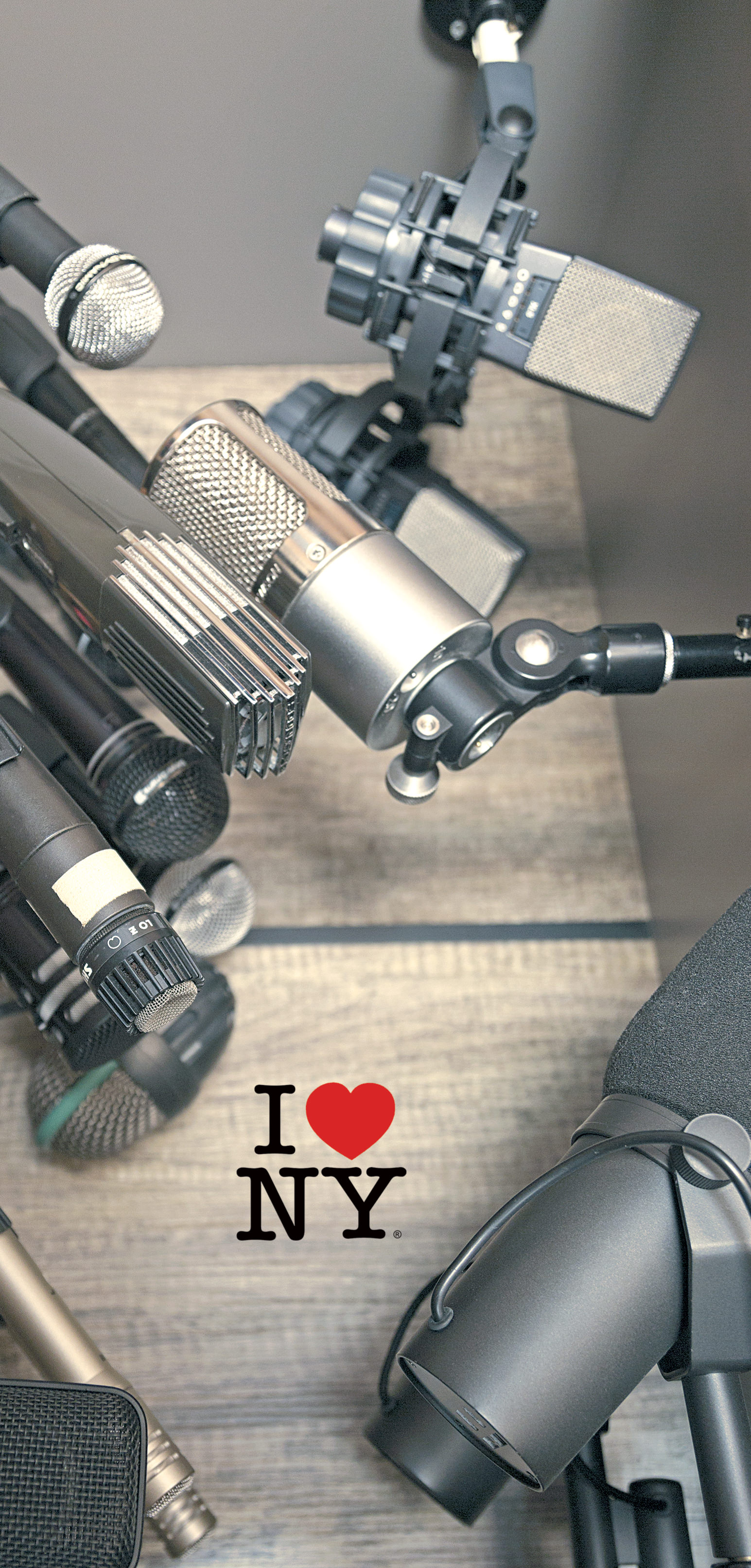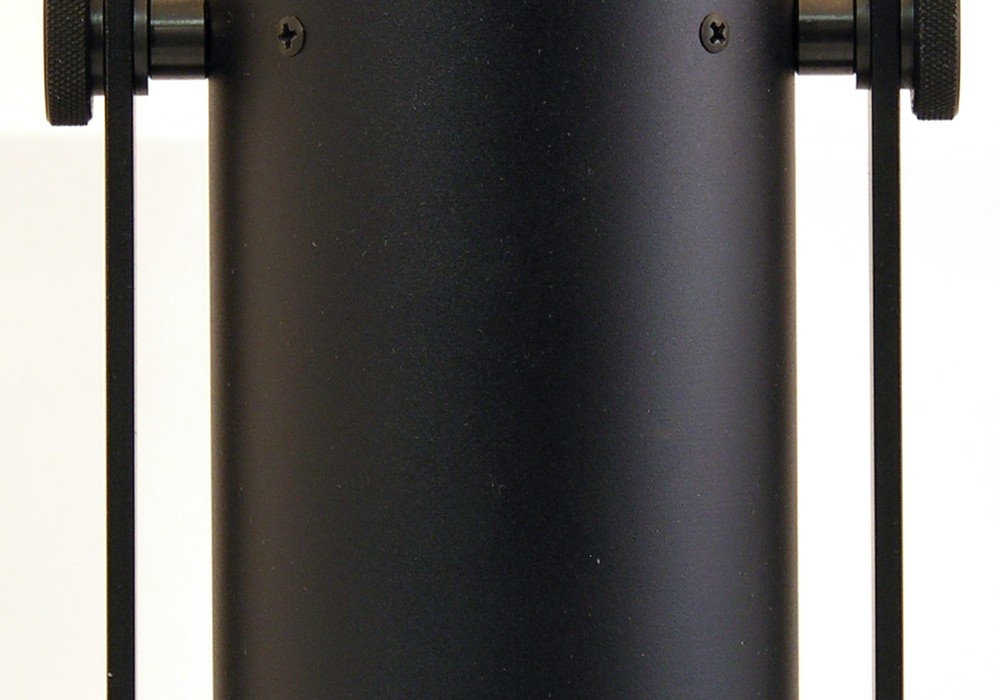I have used Earthworks products since early in my career, and have always wondered what a flagship Earthworks studio vocal microphone would be like to use in one of my sessions. Much to my delight, they finally released the SV33 in 2018, a large diaphragm cardioid electret condenser aimed at the studio and broadcast markets. It offers several unique features that set it apart from many other traditional favorites, like its “Earthworks cardioid” polar response (up to 70 degrees off-axis) and an extended frequency response up to 33 kHz. Our studio has an impressive vocal mic selection, but few offer these capabilities, making this mic a welcome addition to our locker.
Unlike many large diaphragm vocal condensers, the SV33 has a front-address profile reminiscent of the classic Electro-Voice RE20 dynamic mic. The SV33 comes in a cherry box, includes a stand adapter/pivot arm, and a detailed manual. Earthworks were kind enough to offer me the optional Rycote shock mount, which comes in a quality injection-molded case. Since Rycote still doesn’t offer standard 5/8-inch mounts, you will need to use the included thread adapter to get this on a stand in the United States. I found the weight of the microphone often caused the thread adapter to come loose when mounted in certain ways, so I recommend using some mild thread-lock to keep this adapter firmly in place.
Right out of the box, I did the obvious thing and popped the SV33 on a mic stand to try some voiceover/podcasting work. Without any treatment, it provides that “broadcast” feel many seek in a dedicated vocal microphone, and my impression right away is that this will likely become an instant classic in the broadcast market. The low end response is defined and full-bodied like a dynamic broadcast vocal microphone can feel, but with a high end clarity, you won’t get from dynamic mic alternatives.
I cannot understate how the lack of significant proximity effect makes the SV33 one of the most gratifying and forgiving vocal microphones I have ever encountered. It doesn’t have that narrow sweet-spot that many other traditional condenser microphones suffer from. If you are working with less-experienced vocalists who are not familiar with good microphone technique, you will definitely appreciate this microphone. The integrated pop filter does an admirable job, but with certain vocalists, I found that I still needed to supplement with an external pop filter (as Earthworks’ manual also suggests).
Microphone comparisons are always enlightening, and the SV33’s neutrality really helps to show how other popular vocal mics have an emphasis in certain ranges that often make them a good choice for some vocals, but less so on others. The SV33 would be an excellent choice for anyone seeking a flexible workhorse vocal mic that will not disappoint. I tried this with several vocalists and styles and was easily able to get polished results that both clients and I enjoyed with minimal processing. It also punches way above its weight class, and while not cheap by any means, the SV33 competes with microphones that cost many times more.
If you have an acoustic piano in your studio and cut live takes with vocals, you will definitely want to take a serious look at the SV33. Pairing piano and vocal mics that work well together can often be a challenge, but this microphone integrates seamlessly with my usual piano configurations. The rear rejection balances logical placement by keeping the vocal-to-piano ratio favorable, which definitely sets it apart from some other options I generally favor. Paired with our Earthworks QTC set on the piano, it made a brilliant and cohesive high-resolution setup that I plan to use often.
I also tried the SV33 on a variety of non-vocal sources during its time at my studio, and the first application was as a mono drum overhead. I ran the SV33 above the kit, parallel to my spaced omni overheads, just to see how it would do. While mono drum overheads aren’t typically something I implement, I found the SV33 to work very well in this application. Other vocal mics sometimes have an upper midrange that’s too forward for my taste, which can make for an overly prominent snare. For my ears, the SV33 gets a very balanced representation in terms of snare versus toms, as the low end really shines through with this mic.
Next came a lengthy round of small percussion overdubs, and I decided to use the SV33 close mic’d for a variety of shakers, tambourines, and hand drums. Right away I was pleased with the results, especially on shakers and tambourines. This mic captured a very intimate feel without the sound getting too harsh. The transient response was excellent – detailed and articulate without feeling brittle. Its generous pickup pattern also makes the SV33 good for percussionists that like to move around a bit.
On acoustic guitar, I had to deviate from traditional approaches with typical large diaphragm condensers, but a bout of experimentation yielded favorable results. I found that the SV33’s extended low end suits gentler classical players and finger-pickers who can often be difficult to reproduce faithfully with other microphones. For louder strummers playing big-body acoustic guitars, I had to augment the placement to compensate for the extra bass but still achieved excellent results.
One of my favorite applications for the SV33 was on upright bass. Its wide pickup pattern allowed for more distance and room ambience without losing low end, and I found that with one SV33, I could get a sound that usually requires a two mic setup. It worked well for live group takes; the strong rejection in combination with careful player placement kept things intimate – separated but not sterile.
Earthworks have done a brilliant job of creating a new standard in vocal reproduction with the SV33. While it will surely find its way into many larger studios, its price point also puts it within the grasp of project recordists and podcasters.
Buy From Sweetwater
Buy From Vintage King
Buy From Reverb





_disp_horizontal_bw.jpg)